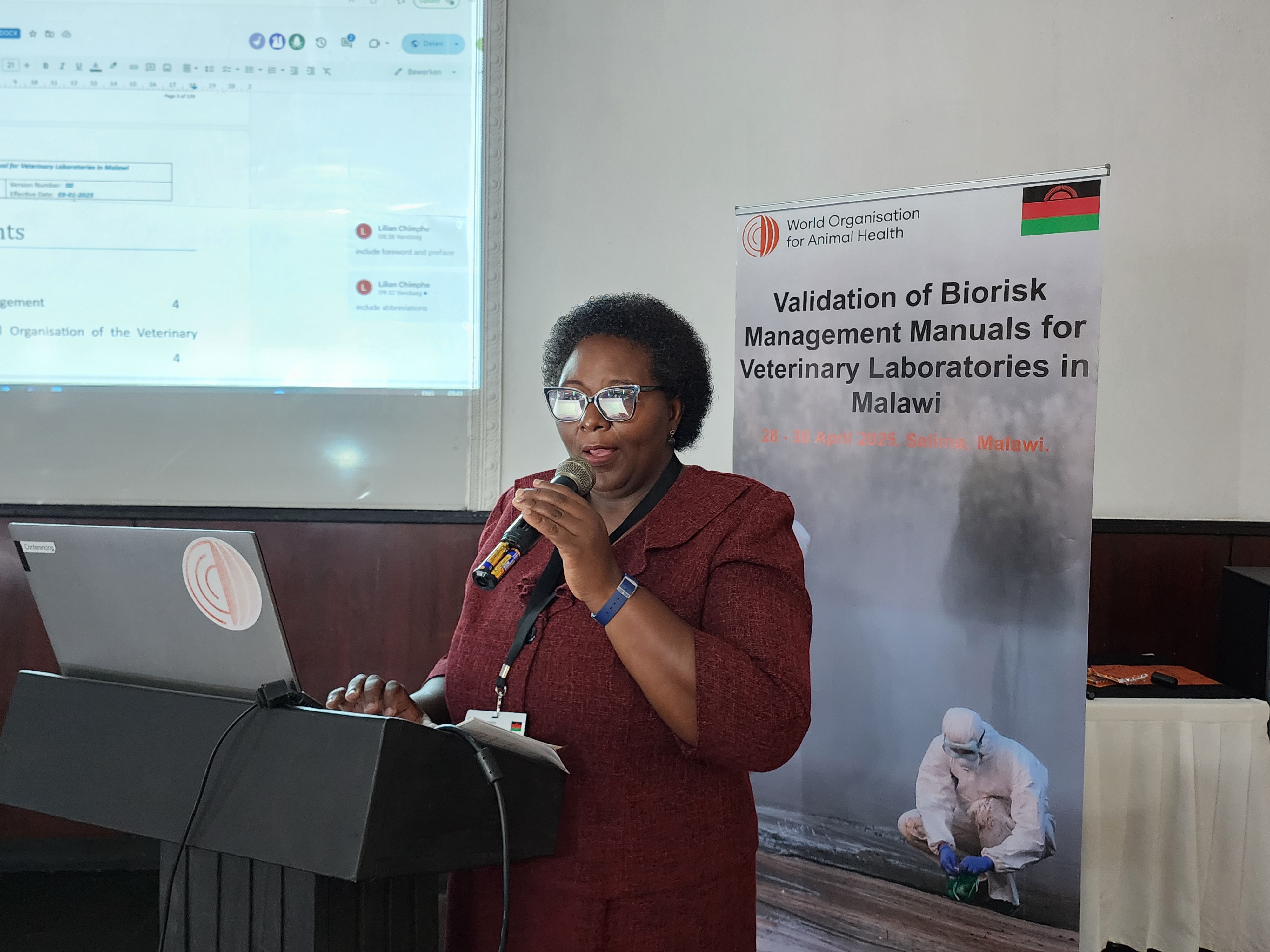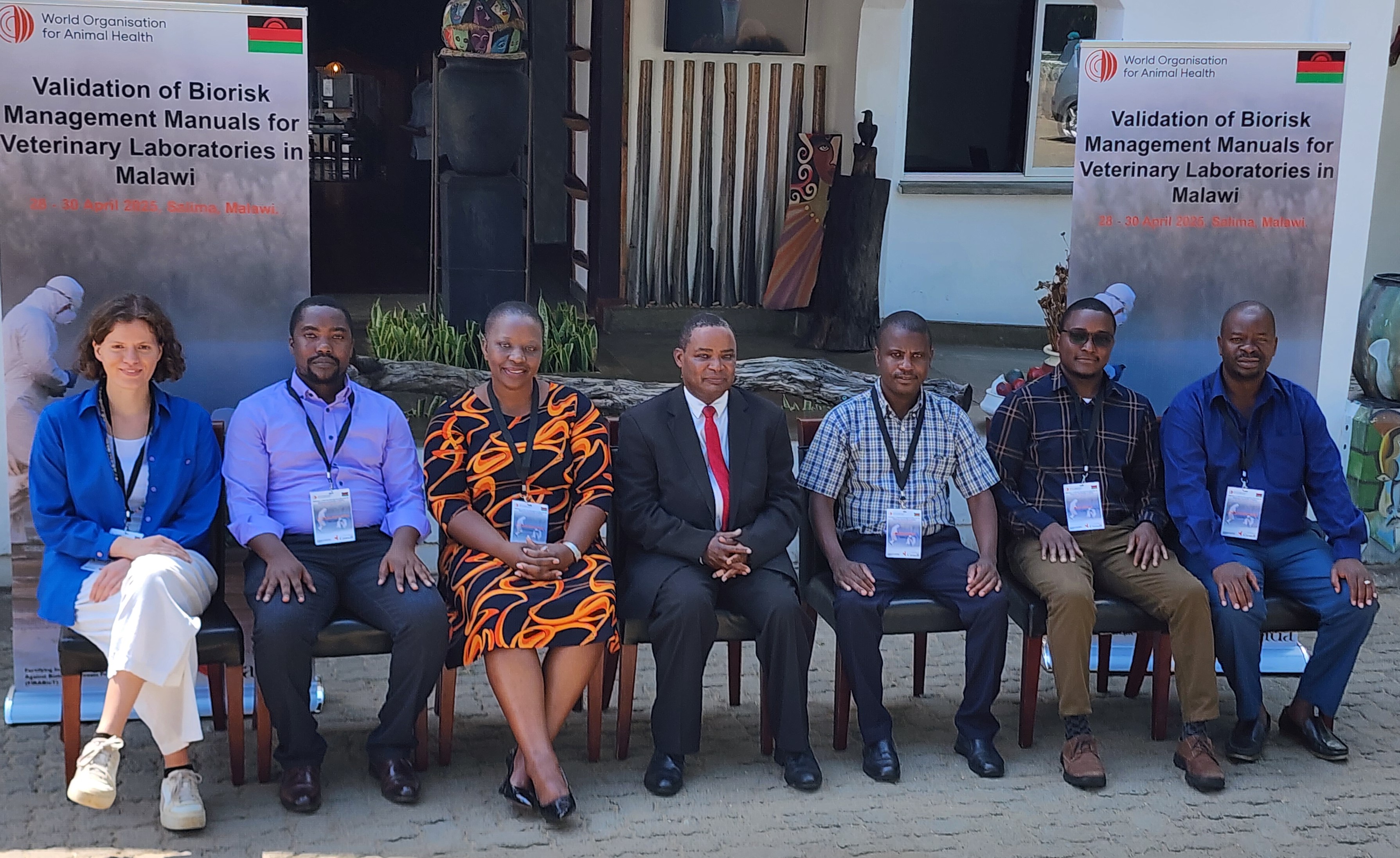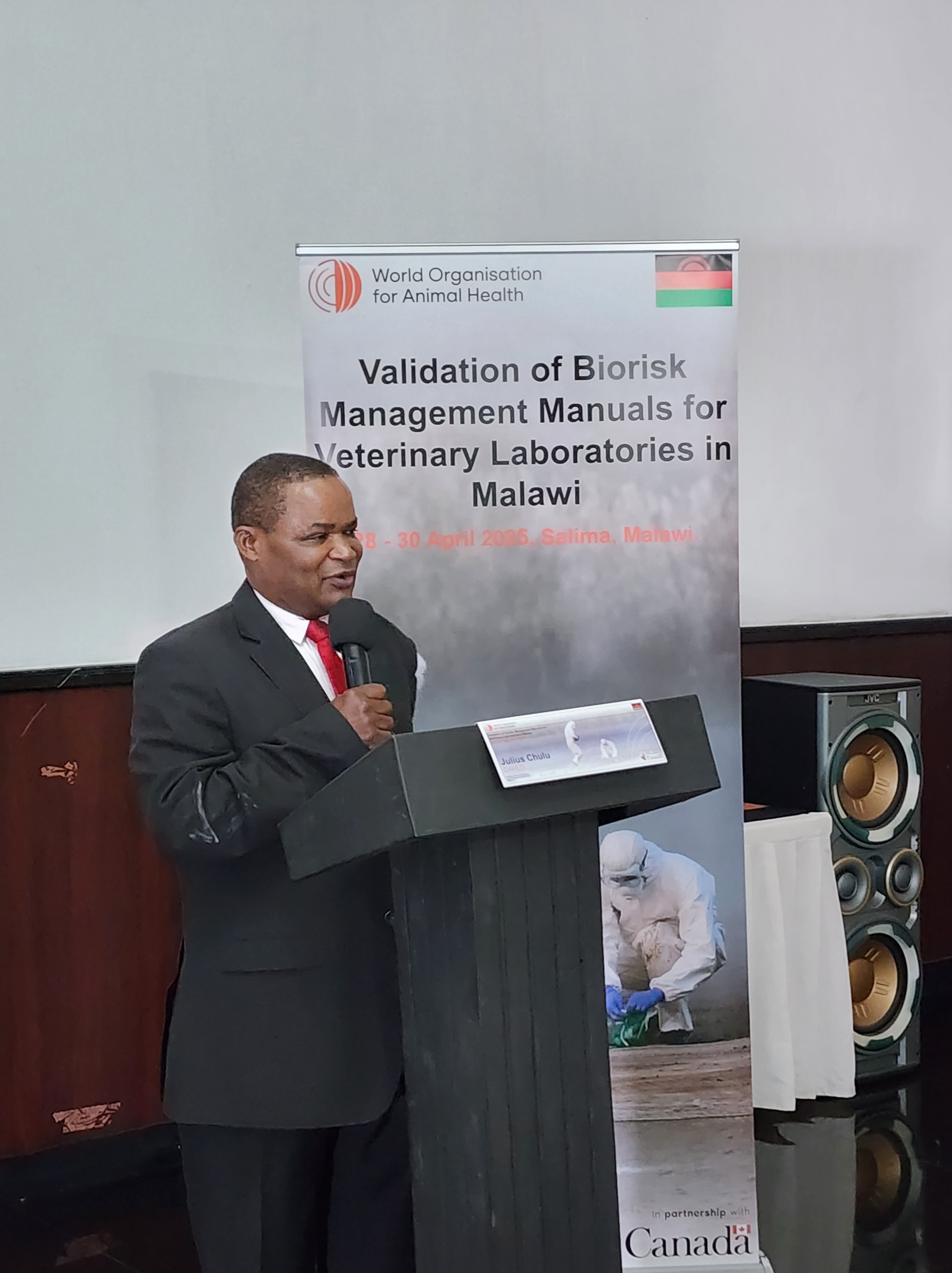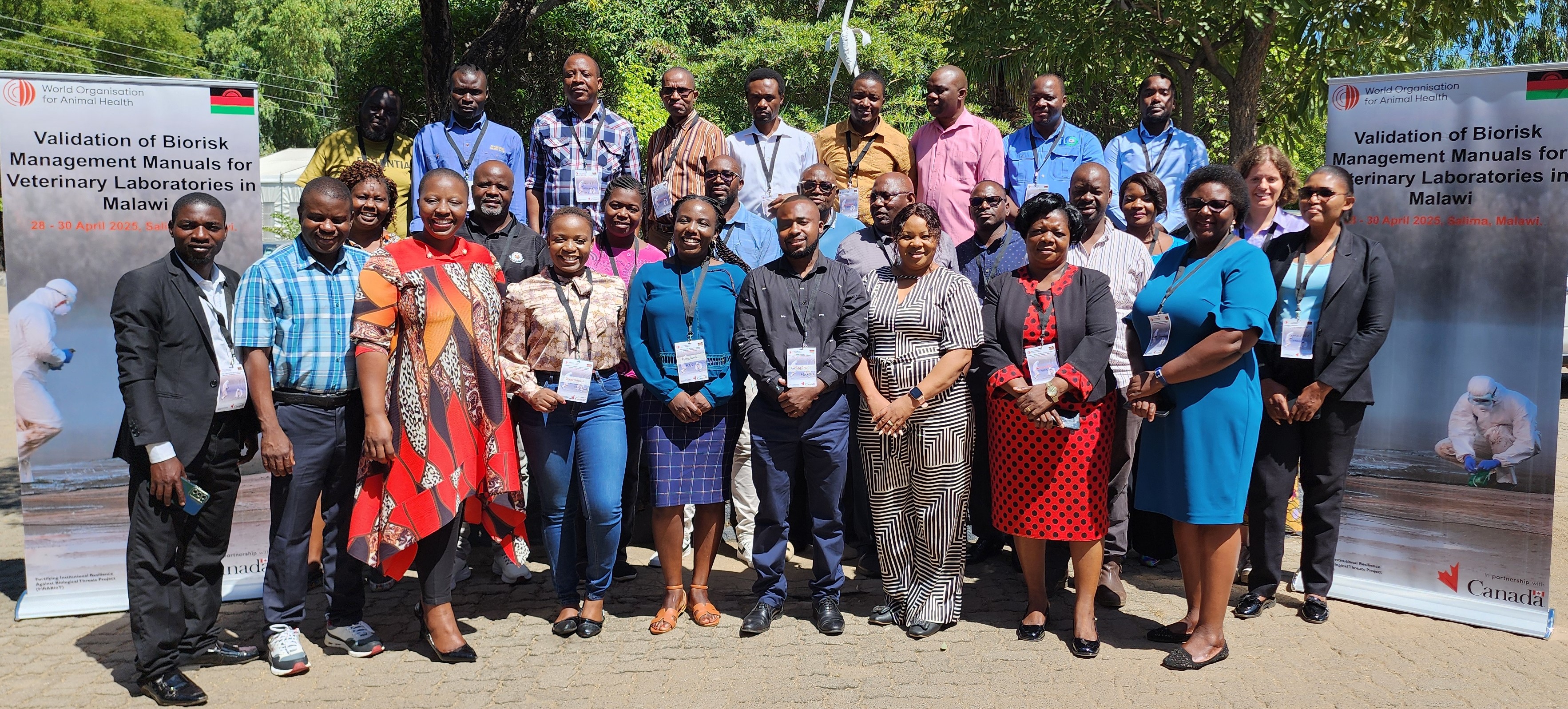
Malawi’s veterinary laboratory system includes three national laboratories: the Blantyre Regional Veterinary Laboratory (BRVL), Mzuzu Regional Veterinary Laboratory (MRVL), and the Central Veterinary Laboratory (CVL). A recent assessment identified several biosafety and biosecurity management gaps across all three facilities, categorized into administrative, operational, and engineering challenges such as lack of biological risk management (BRM) manuals and emergency response plans, and inadequate waste management.
To address these challenges, and as part of its national workplan under the Fortifying Institutional Resilience Against Biological Threats (FIRABioT) project of the World Organisation for Animal Health (WOAH), Malawi sought support to develop lab-specific biological risk management (BRM) manuals. In March 2025, following field visits to the three laboratories, a national BRM manual was drafted. From April 28 to 30, 2025, WOAH organized a validation workshop to review and finalise this BRM manual.
- Prof Petros Chigwechokha (Malawi University of Science and Technology)
The workshop brought together 25 participants from national organizations in Malawi, including the Ministry of Agriculture, the Ministry of Public Health, the Ministry of Defence, the Ministry of Environment, the Bureau of Standards, as well as representatives from the private sector, academia, and research institutes.
Dr. Julius Chulu (Middle), Chief Veterinary Officers (CVO) and WOAH Delegate for Malawi and the facilitators. (left to right): Emma Wijers (WOAH), Ian Peter Busuulwa (WOAH), Vimbai Mukondiwa (CVL Zimbabwe), Dr. Gift Mkanthama (MRVL), Dr. Julius Chulu (DVS), Dr. Peter Mwale (Focal Point FIRABioT) and Dr. Gladson Kamwendo (Ministry of Agriculture). Picture © I. Busuulwa (woah) 2025
The Chief Veterinary Officer (CVO) and WOAH Delegate of Malawi, Dr Julius Chulu, delivering his opening remarks. Picture © E. Wijers (woah) 2025.
In his opening remarks, the Chief Veterinary Officer (CVO) and WOAH Delegate of Malawi, Dr. Julius Chulu, emphasized that biological risk management is crucial for safeguarding against the accidental or deliberate release of pathogens. He noted that without proper systems in place, laboratories can pose risks to themselves and the environment. Validating the National Manual would also help reduce the likelihood of agrocrime and agroterrorism by ensuring that biological agents are handled and stored safely in laboratories.
– Mr Charles Mbewe, Malawi Defence Force
During the validation workshop, an implementation plan was developed to support the effective rollout of the manual by the Veterinary Services. The development of the National Biological Risk Management Manual for veterinary laboratories is part of Malawi’s activities as a beneficiary of the Fortifying Institutional Resilience against Biological Threats (FIRABioT) Project. This project is funded by Global Affairs Canada’s Weapons Threat Reduction Programme in support of the Global Partnership Signature Initiative to Mitigate Biological Threats in Africa.






